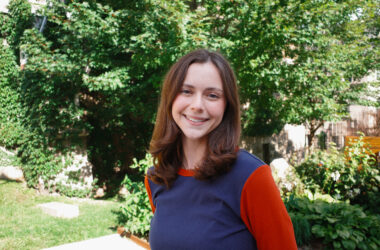Last summer, amid the shelves of children’s novels in my house, I found a book titled 101 Ways to Find a Ghost by Melissa Martin Ellis. As someone who has always explored and enjoyed anything related to the paranormal, I dove into it. What I found most odd about the book was its meticulous, scientific approach to “ghost hunting.” Ellis imparts some advice in the opening chapter: “Your credibility as a paranormal investigator relies on maintaining your objectivity. Critics and skeptics believe that most ghost hunters are unreliable. Ghost hunters are often labeled as fantasy prone personalities—people who like to make things up.”
I love hearing ghost stories, and I’ve always approached sightings of ghosts and other supernatural phenomena with a curious skepticism. I like to ask questions that could explain occurrences in the story (maybe it was just the wind?), but feel a satisfying sensation of eeriness when there appears to be no explanation. The most horrifying ghost stories I’ve heard have often been from people close to me; objective proof is a difficult concept to insert into this dynamic. My belief in ghosts relies on a certain kind of knowledge, one that is not scientific at all, and is in fact, entirely subjective; it requires me to believe in other people. This kind of knowledge is different from the measurable evidence that Ellis looks for, but that doesn’t make it any less true.
The supernatural and paranormal could be analyzed through a scientific, evidence-based framework and likely, if tested, ghost sightings would prove no conclusive result. But it’s more valuable to view them as folklore. Folklore is defined by Merriam Webster as “traditional customs, tales, sayings, dances, or art forms preserved among a people.” Today, Reddit threads and Tumblr blogs discussing sightings of Skinwalkers (creatures of Navajo legend) and black-eyed kids (aliens, most likely) are modern communities of people sharing knowledge through anecdotes and word of mouth. These communities value sensory perception as a way of knowing, and oral history as a record of that knowledge. The channels to impart and gain this kind of knowledge aren’t official, and they certainly aren’t considered legitimate or respectable from an academic standpoint. Still, as folklore has always done, these stories reveal a certain kind of truth. They are a form of expression for people to relate experiences, feelings, and perceptions of their lives that are real despite being unscientific.
Believing in ghosts requires me to take the stories that people tell me at face value. It’s a trust in the idea that other people’s perception might yield something valuable. Hearing these stories out also requires an understanding that reality itself is shaped by multiple perspectives, and can be analyzed through many frameworks. Even if someone may be seeing something that isn’t objectively there, they’re still seeing something. To try to explore the meaning or possibility behind that something, instead of just discounting it because I haven’t experienced it myself, is a validating and mind-opening exercise.
Of course, there will always be people who intentionally lie or try to profit off of others’ beliefs. As such, when collecting qualitative information, one must remain skeptical. Moreover, it is important to distinguish science from folklore. These two ways of knowing can intertwine, and even benefit from each other, but ultimately, they serve different purposes.
Still, Ellis’s words suggest that people who have experienced something considered abnormal are required to prove themselves in order to be believed. Even more so, what Ellis reveals is that most people are highly uncomfortable with what they can’t explain. Enjoying a ghost story—and suspending your disbelief—is all about getting comfortable with ambiguity. It’s about giving over to the fear of the unknown.
So this Halloween, instead of looking outward for proof of ghosts, try looking inward, at your own perception of the world around you. As Stephen King said in his introduction to the 2001 edition of The Shining: “[The] truth is that monsters are real, and ghosts are real, too. They live inside us, and sometimes they win.”
Happy Halloween!









